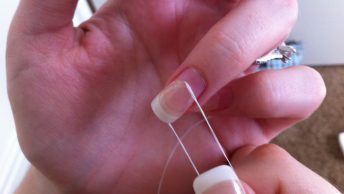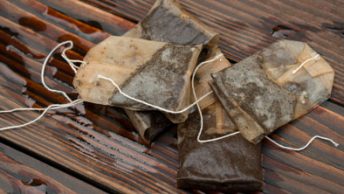Hello, all the beautiful ladies! From today, you won’t focus much on those costly, media-promoted, harmful lip balms. Instead, you can start using easily-available, simple, colorless liquid. Yes, you’ve got it right! We are talking about glycerin for lips!
This sweet liquid is packed with amazing moisturizing and nourishment properties, and that’s why it is a very common ingredient of a lot of alluring cosmetic products.
Why your lips get dried?
Lack of moisture is one of the most common factors responsible for the dryness of the skin. Unlike the skin of other parts of your body, your lips are very soft, sensitive, and are always exposed to harmful UV rays, cold, and draught of air.
Apart from these environmental factors, some health conditions can also make your lips dried. In addition, certain medications, prolonged dehydration, skin allergies, and smoking, etc. can also play their roles in drying your lips.
People who never use any lip balm, and moisturize the lips continuously with saliva, are more prone to lip dryness.
Also Read: Health benefits of Ragi
Benefits of glycerin for lips
Glycerin is known for its humectant nature, among many other qualities, and that’s why it is very commonly used in the food, cosmetic and pharmaceutical industries. Apart from moisturizing your lips, glycerin can heal the inflammation. Below are some of the fascinating benefits of using glycerin for lips.
1. Removes dead skin
Your lips are always exposed to a lot of external aggravation. And you should not be surprised if they become dark and dry. And it would help if you always avoided excessive dryness and peeling of the lips. Applying glycerin on your lips can bring that rosy and pinkish appearance back.
Use a cotton ball to gently dab a bit of glycerin on your lips every night before sleeping.
2. Moisturize your lips
Who doesn’t want to have soft, rosy lips? Soft lips like rose petals also enhance your overall personality. And without moisture, your skin may look unhealthy and may even start bleeding.
Using glycerin for lips can moisturize your skin only in a few days and make them fresh, clean, and supple.
3. Improves mouth ulcers and sores
Mouth sores are usually harmless (unless they are chronic). However, they can make your life uncomfortable as you may feel a burning sensation, especially while eating.
Ulcers and sores commonly affect areas like cheeks, lips, and tongue. And they can take as many as two weeks to disappear! And if there is inflammation, things can get worse for you.
Glycerin can be that miraculous ingredient that can help you eliminate ulcers and sores within a few days.
4. Helps you remove dark spots from your lips
Prolonged and continuous exposure to sunlight, allergic reactions, smoking, high caffeine intake, repeated lips licking, vitamin B deficiency, etc. can cause dark spots on your lips.
Using glycerin for lips can help you get rid of all types of dark spots and blemishes.
5. Improves lips irritation
Excessive dryness is usually responsible for chapped lips, and if not cured on time, can cause inflammation and irritation on your lips.
Different types of allergic reactions and health conditions can also cause chapped lips. In case of an allergic reaction, glycerin may soothe your lips, but can’t control it. Hence, you should consult a doctor for proper treatment. Otherwise, glycerin can be effective in all other types of lips irritation.
6. Glycerin treats bleeding lips
You don’t need to lick your peeled lips anymore, whether they are dry or chapped. Your saliva may heal the pain for a few minutes, but overall, it increases the dryness further and may cause excessive bleeding.
Glycerin for lips cleans and your lips and exfoliates dead skin. And the moisturizing power of this versatile liquid will also enhance healing and stop bleeding.
7. Makes your lips clean and soft
Thanks to the combination of humectant, healing, and exfoliating properties, glycerin can also improve your lips’ color and can make it soft and supple.
8. Glycerin helps get rid of dark lips
Having dark spots on the lips and having dark lips both are slightly different. When you are not so serious about your lips, they get dark due to several factors, including dry air, impurities in the environment, smoking, alcohol abuse, several health conditions, etc.
Your lips may get dark, especially if they are sensitive to cold weather or specific allergens. Irrespective of the causative factors, if you use glycerin for lips regularly, it won’t take long to get back those supple, soft, and clear lips.
9. Glycerin postpones aging signs
As your age advances, the production of collagen starts hampering, and skin loses its elasticity. As a result, fine lines and wrinkles start appearing on the skin.
And when it comes to your lips, the outer layer is very thin as well as sensitive. And it becomes progressively thinner with your age. Like, you use various oils and creams for your face, lips also require external care to be healthy.
Glycerin for lips will help you protect your lips from external factors, postpone aging signs, and keep them healthy even at your 50s.
10. Maintains natural pinkish color
Unlike your skin, there is no melanin for your lips. As you know, melanin protects your skin from various external harmful factors and maintains your skin’s natural color.
But your lips are covered by stratum corneum, exceptionally thin skin, which maintains the reddish or pinkish color due to the high concentration of blood vessels. Factors like unhealthy eating habits, smoking, alcohol abuse, cold weather, and high altitude, etc. form a dark layer on your lips.
As mentioned earlier, using glycerin for lips can exfoliate your skin; it can also maintain your lips’ natural pinkish color.
11. Makes your lips healthy
You may think that glycerin only moisturizes your skin. But, no, this versatile liquid is much more than that. Thanks to its exceptional healing and hydrating properties, glycerin can provide a much-needed protective layer to your lips.
Apart from protection, glycerin can also help due to its cell-regenerating, cleansing, and toning properties.
12. Glycerin for dry and chapped lips
Exposure to prolonged dry weather can make your skin excessively dry. And you will find it hard to avoid licking your chapped lips.
As already discussed, thanks to the moisturizing abilities, glycerin for lips will improve dry and chapped lips within a few days.
Glycerin is no less than sunscreen for your lips. It is packed with various skin and lips benefits and can also improve various other skin problems, including aging, minor burns, acne, injuries, etc.
How to Use Glycerin for Lips? (3 DIY Tips)
Buying the glycerin from a nearby drug store, cleaning your lips, and applying it with your fingers is a very simple, yet effective way of using glycerin for lips. However, here are some DIY tips if you want to make it more effective.
1. Glycerin and Lemon for Lips
Lemon is very famous for its bleaching prowess. And you can use glycerin and lemon together to get clear and soft lips but the glowing face as well.
- Mix one tbsp glycerin with one tbsp fresh lemon juice.
- Alternatively, add one tbsp rose water or distilled water.
- Apply gently on your lips every day and notice the results.
2. Glycerin and Castor Oil for Lips
Using castor oil with glycerin for lips is another great idea. You might not like the smell of castor oil, but its healing and moisturizing properties can’t be ignored easily.
If you have excessively dry or dark lips,
- Add ½ tbsp castor oil to ½ tbsp glycerin.
- For even better results, you can add ½ tbsp. Lemon as well.
- Apply on the lips before going to bed to give glycerin more working hours.
3. Glycerin and Honey for Dark Lips
Honey is packed with various skin benefits. And you should try this recipe, especially if you have dark lips due to skin allergy or a prolonged ailment.
- Mix ½ tbsp each of glycerin, raw manuka honey, and lemon juice.
- Apply swiftly on your lips.
- Use a cotton ball of your lips are chapped badly.
- Avoid licking this natural and tasty mixture. 😉
Important tips while using glycerin for lips
It would help if you avoided consumption while using glycerin for lips. Consuming a little amount of glycerin is safe, but excess consumption may be associated with side-effects. Also, if you are allergic to glycerin, you should not use it. Here are some important tips to keep in mind while applying glycerin on the lips.
- Initially, try glycerin alone to check if you get the desired result.
- Don’t peel of lick your lips at all.
- Keep your lips and skin hydrated by drinking enough water.
- Avoid alcohol, smoking, drugs, and other irritants to keep your lips and skin healthy.
- You can apply a thin layer of glycerin before applying lipstick to protect your lips from harmful chemicals.
- Glycerin can only improve minor cuts or burns. Please don’t depend on it in case of a major injury.
To Sum it Up
Glycerin is a versatile liquid, and using glycerin for lips is packed with numerous benefits. It can be a great natural treatment for your lips and can protect from various common problems. Start using glycerin today, if you haven’t used it yet. Do write to us if you know some other benefits of glycerin too.
Reference
https://www.dailygreenlife.com/12-awesome-benefits-of-glycerin-for-lips-3-diy-recipes-included/







